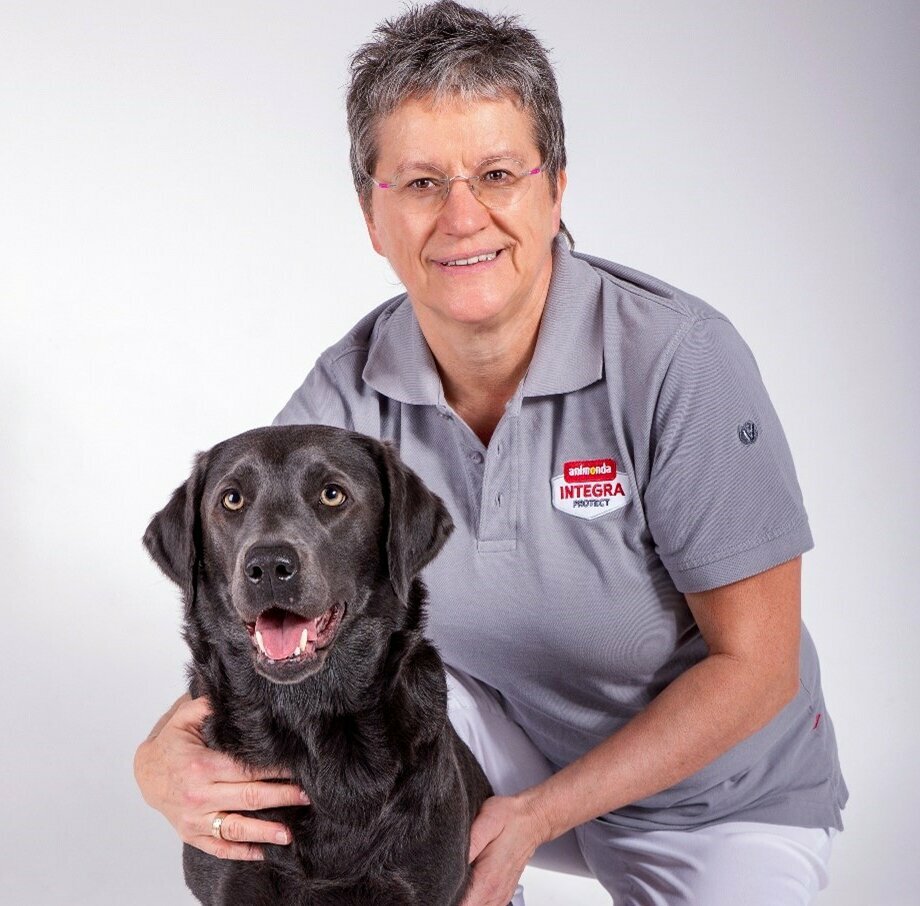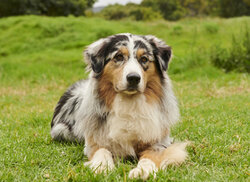Poisoning in dogs: recognising the symptoms and potential dangers
If your dog has been poisoned, it is important to act fast. Find out how to quickly recognise the symptoms of poisoning in dogs. In this interview, Dr. vet med. Simone Radicke, a specialist veterinarian for animal nutrition and dietetics, explains what dangers there are for dogs in everyday life and what to do in an emergency situation where your dog has ingested a poisonous substance.
In this animonda interview you will find out
- what substances are poisonous for your dog
- what symptoms a dog shows in the event of poisoning
- what to do if your dog has been poisoned
- how poisoning can be treated in your four-legged friend

These substances can cause poisoning in dogs
animonda: What are the possible sources of danger for poisoning in dogs?
Dr. vet med. Simone Radicke: Potential dangers for poisoning in dogs are present everywhere. In the home, certain foods can be dangerous for your pet; other major potential sources of danger are chemical and plant toxins. Especially when you take your dog for a walk, chemical toxins such as rat poison or slug pellets can pose a potential danger.
animonda: What can poison a dog?
Dr. vet med. Simone Radicke: As far as chemical poisons are concerned, rat poison (coumarin), antifreeze, medicines and slug pellets are of major importance – they are life-threatening for a dog. And when it comes to plants, the rubber plant, Ficus benjamina, and poinsettias are a source of danger for your pet. With regard to foods, onions, raisins or grapes, nuts and chocolate are just some of the things that should be avoided.
animonda: What foods are toxic for dogs?
Dr. vet med. Simone Radicke: Among the vegetables that need to be mentioned are onions (raw and cooked) and garlic. As regards fruit, you should not give your dog grapes or raisins, even though it is not yet known what triggers the poisoning. Walnuts and macadamia nuts are also critical. Caffeine, found in coffee and cola, is also not suitable for dogs. The same applies to chocolate: here it is the theobromine that is harmful from a body weight of 20 mg/kg and above. Dog owners should also be careful with sugar substitutes. Birch sugar (xylitol) is definitely not intended or suitable for dogs. So never give your dog sugar-free chewing gum, because even 50 mg of xylitol per kg of body weight is enough to poison your pet.
animonda: How quickly does poisoning occur in a dog?
Dr. vet med. Simone Radicke: The development of poisoning in dogs is always dependent on the amount and type of toxin. Regardless of the amount of poison ingested, the dog should always be taken to the vet. The faster, the better.
Possible symptoms of poisoning in dogs
animonda: Poisoning in dogs – what are the symptoms?
Dr. vet med. Simone Radicke: Poisoning in dogs leads to a variety of symptoms in the gastrointestinal tract, the central nervous system. Possible signs are:
- Nausea, possibly with retching
- Salivating
- Diarrhoea and vomiting, possibly with blood
- Blood in the urine
- Blood spots on the mucous membranes
- Spasms and trembling
- Paralyses
- Unconsciousness
animonda: What should you do in the event of poisoning?
Dr. vet med. Simone Radicke: If you have seen that your dog has ingested a toxic substance, you should take immediate action. Time is decisive here. If your dog is already showing symptoms, you must act fast. Help the vet to get prepared as soon as possible. A phone call is very important and information about the possible poison is extremely valuable for your vet. If your dog has eaten a potentially poisonous plant, make sure that you take this with you to the vet. The same applies to packs of medicines.
Unfortunately, dogs who have eaten rat poison do not show symptoms until some time after ingestion. This is because rat poison affects blood clotting and does not have a direct lethal effect. Signs of poisoning with rat poison are small bleedings on the skin or in the mucous membrane of the mouth. If this is the case, the vet will carry out a coagulation test.

Diagnosis & treatment if your dog has been poisoned
animonda: How can poisoning be treated?
Dr. vet med. Simone Radicke: In cases of poisoning, the vet usually injects the dog with an emetic to induce vomiting. This treatment is carried out when the dog has been brought to the vet within two hours of ingesting the poison and is fully conscious. There may also be the need for gastric lavage (stomach “pumping”). Here, the dog is given an anaesthetic. If the poison is known, an antidote is administered.
The key to treating poisoning is to make sure that the poison is removed from the body. The dog will therefore receive a continuous drip over an extended period of time. Depending on any damage to other organs, such as the kidneys, the vet will provide appropriate additional treatment.
To ensure that the dog is well monitored and the success of the treatment can be checked, it is usually kept in the clinic.
animonda: What consequences can poisoning have in dogs?
Dr. vet med. Simone Radicke: This depends on the poison and the amount ingested. It is also always important to take the condition of the dog into account.
animonda: How can I protect my dog?
Dr. vet med. Simone Radicke: Unfortunately, there are hidden dangers everywhere. It all begins in the home. Your own garden and other open spaces also present many potential sources of poisoning. Your dog should therefore always be kept under control, even when you take it for a walk.
If it has eaten something unfamiliar, you should keep a close eye on your dog for the next few hours. Plants and foods that are tempting but poisonous for dogs should not be kept within your pet’s reach. Unfortunately, there is no such thing as 100% protection.
You may also like this

Allergies in dogs
Common allergies and treatment options

Signs of illness in dogs
Examine your dog regularly for signs of illness

Dangerous food for your dog
You should not give these food items to your dog

Holidays with your dog
How to prepare for a holiday with your dog

